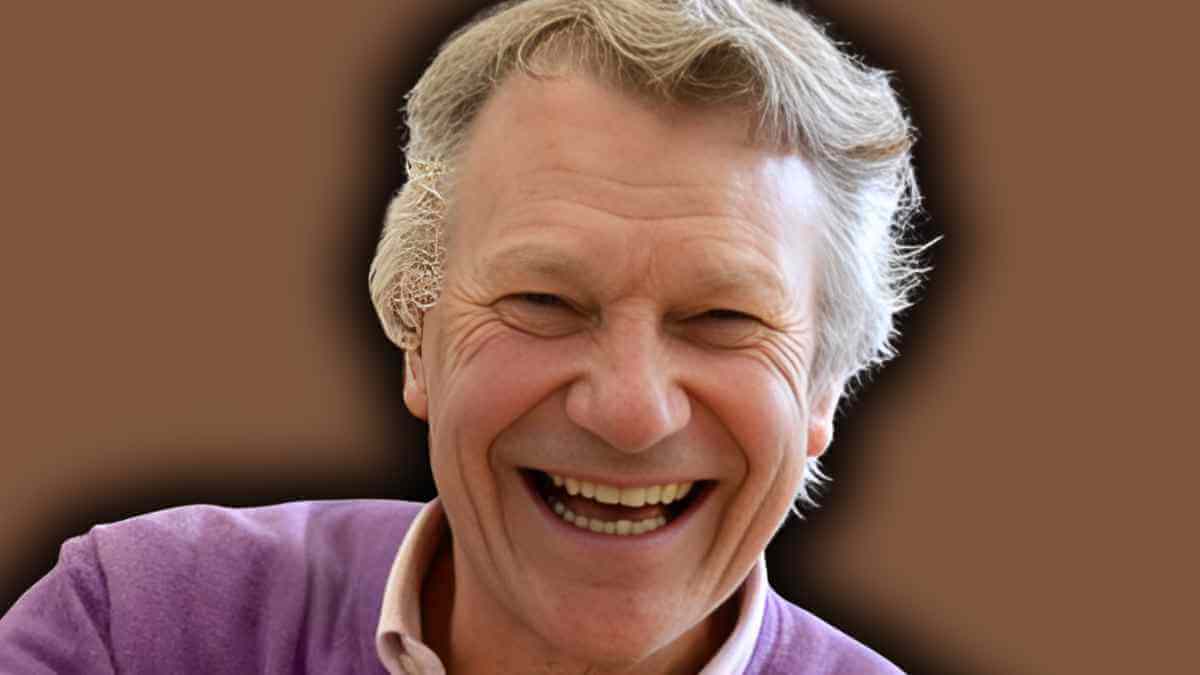Nigel Perrin: A Luminary of Choral Excellence and Countertenor Brilliance

Nigel Perrin was born on 4 November 1947 in England, destined to leave an indelible mark on the world of choral music. From his childhood years, he displayed both a sensitivity to musical nuance and a steely determination that would characterise his entire career. His earliest formative experience came as a chorister at Ely Cathedral, where the rigour of daily services, the discipline of rehearsal, and the beauty of sacred music shaped the young boy’s sensibilities.
Later, Perrin progressed to become a choral scholar at King’s College, Cambridge, under the tutelage of Sir David Willcocks, one of England’s most respected choral conductors and educators. This environment not only exposed him to the great choral-masterworks and Anglican choral tradition but also deepened his musical understanding, vocal technique, and interpretive insight.
His Cambridge years unlocked opportunities not only to sing great choral repertoire but to explore the countertenor voice more fully. It was there that Perrin’s talent for the high male register became a defining feature of his identity as an artist — a countertenor voice steeped in tradition yet forward-looking in its purity and flexibility.
Emergence as a Countertenor and the King’s Singers Era
In 1969, Nigel Perrin joined The King’s Singers as the first countertenor — a ground-breaking move at a time when countertenors were still relatively rare in mainstream vocal ensembles. He remained with the group until 1978.
During those nine years, Perrin helped define the ensemble’s signature sound. His clarity, vocal control, and musical sensitivity lent the group a distinctive brightness and agility, especially in their interpretations of early music, Renaissance polyphony, English part songs, madrigals, and contemporary works. As the group grew in popularity, appearing on television and touring internationally, Perrin’s voice became a core part of their identity.
With The King’s Singers, he contributed to approximately 25 commercial albums and countless live performances. These recordings and concerts helped popularise the male-voice ensemble format and brought a renewed public awareness to the countertenor voice in chamber choral settings.
Although he left The King’s Singers in 1978, his tenure continued to influence how ensembles approached repertoire for male high voices, and his example inspired a generation of countertenors who followed.
Transition to Conducting, Teaching, and Choral Leadership
After his period with The King’s Singers, Perrin gradually turned his focus more toward composition, conducting, and mentorship. He founded Bath Camerata in 1986, dedicating himself to directing and elevating the ensemble. Under his stewardship, the group flourished, performing works spanning the Renaissance to modern repertoire, and building a reputation for musical sensitivity, textual clarity, and expressive depth.
In 1990 Perrin became Musical Director of the Bath Bach Choir, a position he held until 2022. His long tenure there is a testament to his commitment, vision, and leadership. He worked tirelessly to refine the choir’s technique, shape its interpretive voice, and widen its repertoire. Over the years, the choir under him produced many memorable performances, from baroque masterworks to modern choral commissions.
He also served as the conductor of the Exeter Festival Chorus from 1999 to 2019, expanding his influence into the southwest region of England and contributing significantly to the cultural life of that area.
Alongside his conducting roles, Perrin was deeply engaged in teaching. He lectured, ran masterclasses, and mentored young choral singers and conductors across the country. His pedagogical approach combined rigour with warmth; he demanded excellence but leavened that with empathy for the vocal instrument.
Throughout his later life, he maintained a strong bond with singers at various levels — from amateur choirs to professionals — always emphasising the importance of text, dynamics, blend, and musical storytelling.
Characteristics of Perrin’s Artistry
To understand Nigel Perrin’s lasting appeal, one must examine the unique qualities that characterised his musicianship.
A Balanced, Seamless Voice
As a countertenor, Perrin managed to combine a clear, even tone with remarkable control across registers. Unlike some voices that strain at extremes, his seemed at ease in both pianissimo and forte, in lyric lines and more florid passages alike. His phrases felt unbroken, his legato assured, and his dynamic shading subtle.
Stylistic Versatility
While rooted in the choral and early music traditions, Perrin’s musical curiosity was wide. He championed works of the Renaissance, Baroque, and Romantic periods, but he was also open to modern and contemporary choral writing. This flexibility allowed him to shape ensembles that could perform confidently across centuries, without sounding gimmicky or disjointed.
Textual Clarity and Expressivity
For Perrin, the words always mattered. He strove to make texts intelligible, shaping vowels and consonants to support meaning and musical logic. His choirs were praised for their diction and expressive connection, not just their lush harmonies. In his conducting, he placed subtle emphasis on phrasing that mirrored the poetry or scriptural text.
Humility and Teaching Spirit
Despite his stature, Perrin was not a conductor who demanded obedience through intimidation. His colleagues, students, and singers often remarked on his approachable nature, willingness to explain, and attentiveness to each singer’s needs. He believed in serving the music and the singers equally, striving for collaboration rather than dictatorship.
Recordings, Repertoire, and Legacy
Nigel Perrin’s recorded legacy is extensive. With Bath Camerata and other ensembles, he produced critically regarded recordings of choral works, particularly spotlighting underperformed pieces and romantic song cycles arranged for choir. His discography includes titles such as Why Do the Roses: Romantic Songs and To Music, among others.
Under his direction choirs tackled a broad swathe of repertoire: motets, mass settings, oratorios, secular choral cycles, sacred works in varied languages, contemporary commissions, and arrangements of folk songs or art songs. He had a knack for programming — pairing the familiar with the unexpected, mixing comfort pieces with daring new works — always with an ear to audience engagement and educational value.
Perhaps one of his most enduring legacies is the influence he had on singers and young conductors. Many who trained under him have gone on to careers of their own, carrying forward his emphasis on musical sensitivity, clarity of expression, and the importance of choral responsibility.
Final Years and Passing
After many decades of devoted service to choral music, Nigel Perrin passed away on 23 June 2024 at the age of 76. His death was met with tributes across the choral community, from individual singers and students to major ensembles, who acknowledged his influence, mentorship, and artistry.
Even in his later years, he remained active, engaged with his choirs, audiences, and students. His illness (if any) was largely kept private, mirroring his dignified approach to life and music. His retirement from some posts was gradual, but until near the end he remained invested in the musical process, in shaping choral sound, and in inspiring others.
Why Nigel Perrin Matters Today
It is worth reflecting on why Nigel Perrin continues to matter, not just historically but in the living landscape of choral music.
First, he stood at a junction of tradition and innovation. He inherited a strong choral line from the Anglican and European choral traditions, yet he was not content to conserve it passively. He explored new repertoire, encouraged fresh singing techniques, and broadened the horizons of those under his direction.
Second, as a countertenor in a male ensemble early in his career, he helped normalise the presence of high male voices in chamber choral settings. In doing so, he made space for those voices to be taken seriously, not only in early music but in the broader choral world.
Third, his focus on education — mentoring individuals, conducting workshops, and nurturing choirs — multiplied his impact. Rather than simply building ensembles and leaving behind recordings, his true legacy extends into people: the singers and conductors who carry his principles forward.
Fourth, his musical standards remain exemplary. Modern choirs and conductors still look to performances he directed for clarity of texture, balance of voices, refined dynamics, and meaningful textual interpretation.
Lessons from Nigel Perrin’s Example
Future singers, conductors, and choral enthusiasts can draw several lessons from Nigel Perrin’s life:
- Cultivate vocal balance and ease
His voice was not about flashy extremes but about evenness, control, and a believable line. Singers can aim for that steadiness as a foundational goal. - Respect the text as partner to music
For Perrin, poetry, scriptural text, or lyrics were never secondary. He treated the words with as much care as the notes themselves. - Be generous as a teacher
His humility, patience, and openness to questions made him beloved as much as respected. Teaching and mentorship amplify artistic influence. - Program creatively
Perrin’s ensembles did not rest on tried favourites alone. He juxtaposed familiar works with neglected repertoire, widening listeners’ horizons. - Balance tradition with progress
He looked backward and forward — grounded in choral history, yet open to new compositions, fresh techniques, and evolving tastes.
Conclusion
Nigel Perrin’s life was a testament to what music can achieve when artistry, discipline, and human warmth converge. As a countertenor, he elevated the register to new possibilities; as a conductor and teacher, he shaped minds, voices, and ensembles; as a human being, he led with humility and generosity.
His recordings will continue to inspire, his students and colleagues will carry forward his principles, and his example will remain a beacon for choral music throughout the English-speaking world and beyond. The name Nigel Perrin will endure, not merely as one among many musicians, but as a guiding voice in the ongoing dialogue of choral art.



